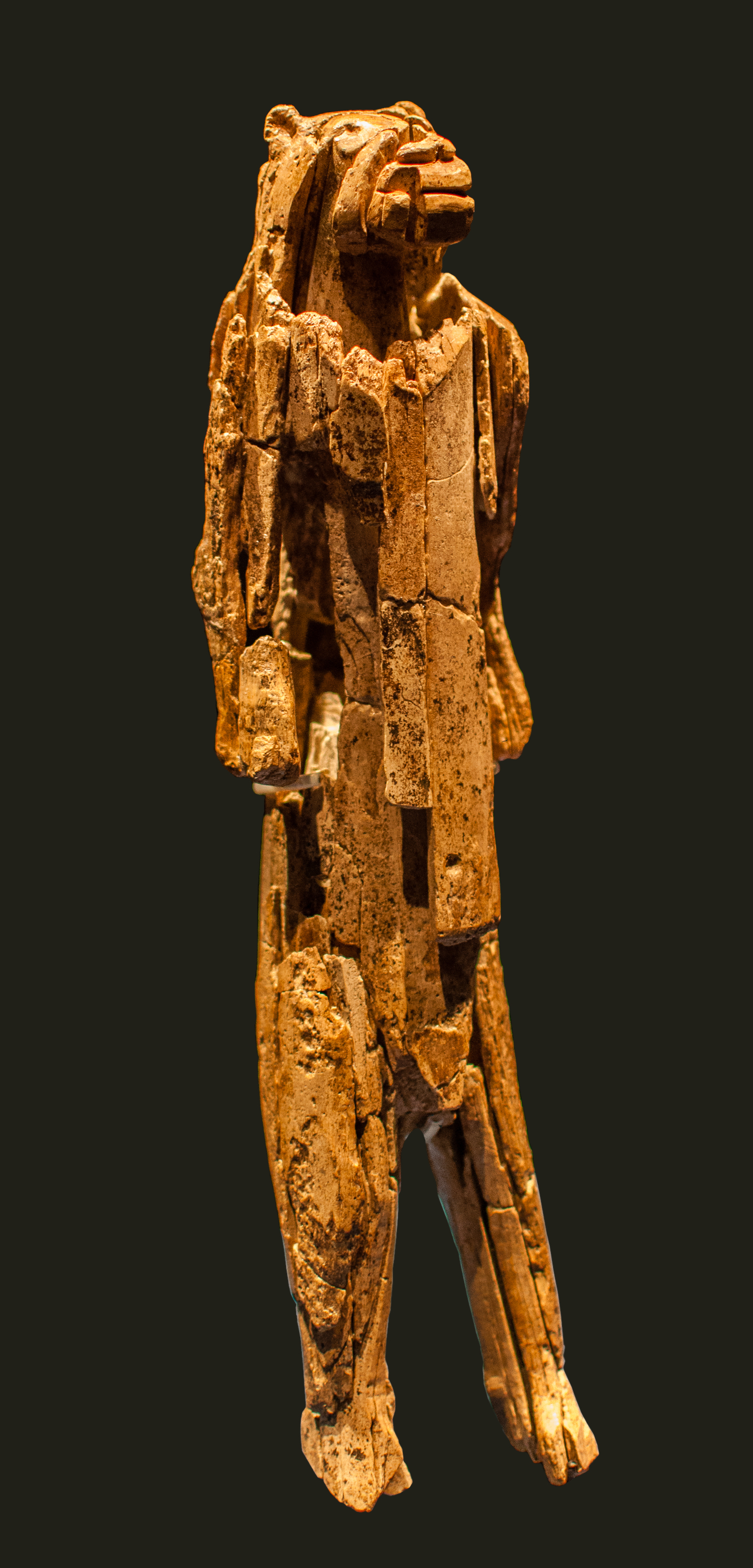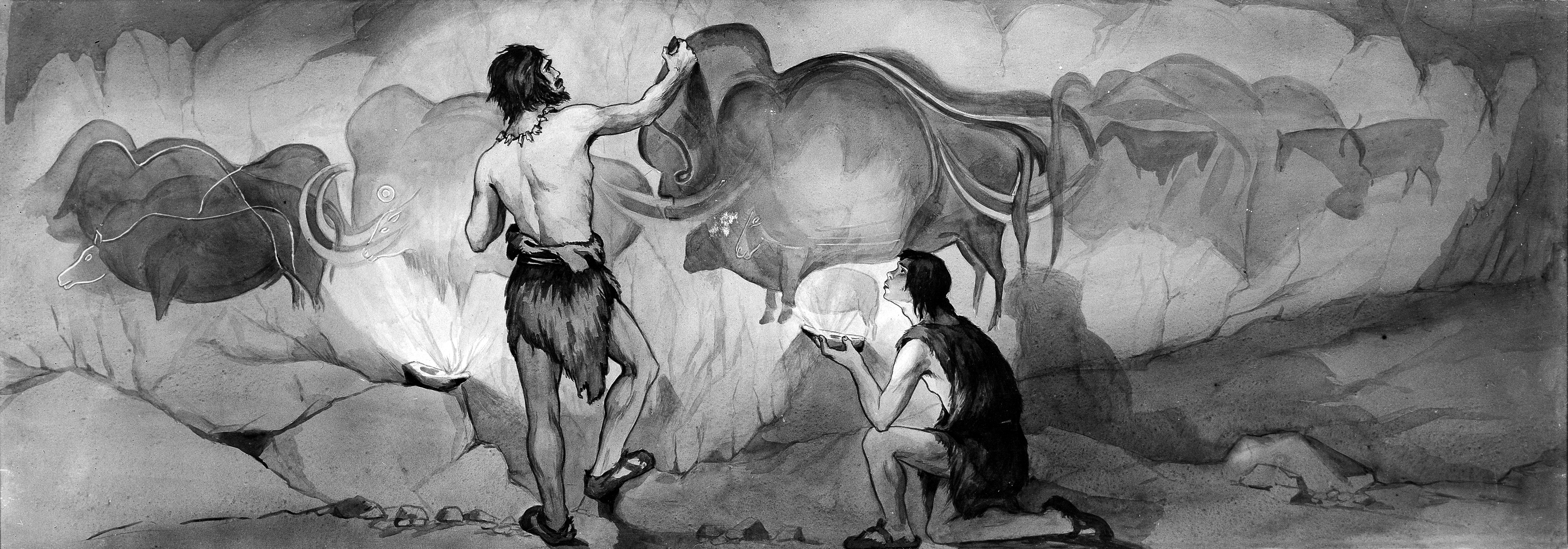|
Montesquieu-Avantès
Montesquieu-Avantès () is a commune in the Ariège department in southwestern France. History Montesquieu-Avantès has a significant prehistory in the Pyrenees. The cave-complex was carved out by the Volp River resulting in three extensive caverns: , Trois-Frères and Tuc d'Audoubert. They were discovered by the Begouën children on 10 October 1912. The caves contain unique works of art. The Salle des Bisons features two masterfully modelled bison, which were sculpted in clay with a stone spatula-like tool 17,000 years ago and show the imprint of the artist's fingers. The pair are among the largest and finest surviving prehistoric sculptures. Occupied in the Upper Palaeolithic, notably during the Magdalenian Epoch, the caves have been extensively studied. These works on Tuc d'Audoubert were compiled in 2009 in a monograph entitled "The Secret Sanctuary of the Bison". A subsequent book entitled "The Cave of the Three Brothers" ("La Caverne des Trois-Frères"). docume ... [...More Info...] [...Related Items...] OR: [Wikipedia] [Google] [Baidu] |
Communes Of The Ariège Department
The following is a list of the 325 communes of the Ariège department of France France, officially the French Republic, is a country located primarily in Western Europe. Overseas France, Its overseas regions and territories include French Guiana in South America, Saint Pierre and Miquelon in the Atlantic Ocean#North Atlan .... The communes cooperate in the following intercommunalities (as of 2025):Périmètre des groupements en 2025 BANATIC. Accessed 28 May 2025. * Communauté d'agglomération Pays Foix-Varilhes * Com ... [...More Info...] [...Related Items...] OR: [Wikipedia] [Google] [Baidu] |
Communes Of France
A () is a level of administrative divisions of France, administrative division in the France, French Republic. French are analogous to civil townships and incorporated municipality, municipalities in Canada and the United States; ' in Germany; ' in Italy; ' in Spain; or civil parishes in the United Kingdom. are based on historical geographic communities or villages and are vested with significant powers to manage the populations and land of the geographic area covered. The are the fourth-level administrative divisions of France. vary widely in size and area, from large sprawling cities with millions of inhabitants like Paris, to small hamlet (place), hamlets with only a handful of inhabitants. typically are based on pre-existing villages and facilitate local governance. All have names, but not all named geographic areas or groups of people residing together are ( or ), the difference residing in the lack of administrative powers. Except for the Municipal arrondissem ... [...More Info...] [...Related Items...] OR: [Wikipedia] [Google] [Baidu] |
Ariège (department)
Ariège (; ) is a Departments of France, department in southwestern France, located in the regions of France, region of Occitania (administrative region), Occitanie. It is named after the river Ariège (river), Ariège and its capital is Foix. Ariège is known for its rural landscape, with a population of 153,287 as of 2019.Populations légales 2019: 09 Ariège INSEE Its Institut national de la statistique et des études économiques, INSEE and postal code is 09, hence the department's informal name of ''le zéro neuf''. The inhabitants of the department are known as ''Ariègeois'' or ''Ariègeoises''. Geography [...More Info...] [...Related Items...] OR: [Wikipedia] [Google] [Baidu] |
Departments Of France
In the administrative divisions of France, the department (, ) is one of the three levels of government under the national level ("territorial collectivity, territorial collectivities"), between the Regions of France, administrative regions and the Communes of France, communes. There are a total of 101 departments, consisting of ninety-six departments in metropolitan France, and five Overseas department and region, overseas departments, which are also classified as overseas regions. Departments are further subdivided into 333 Arrondissements of France, arrondissements and 2,054 Cantons of France, cantons (as of 2023). These last two levels of government have no political autonomy, instead serving as the administrative basis for the local organisation of police, fire departments, and, in certain cases, elections. Each department is administered by an elected body called a departmental council (France), departmental council ( , ). From 1800 to April 2015, these were called gene ... [...More Info...] [...Related Items...] OR: [Wikipedia] [Google] [Baidu] |
France
France, officially the French Republic, is a country located primarily in Western Europe. Overseas France, Its overseas regions and territories include French Guiana in South America, Saint Pierre and Miquelon in the Atlantic Ocean#North Atlantic, North Atlantic, the French West Indies, and List of islands of France, many islands in Oceania and the Indian Ocean, giving it Exclusive economic zone of France, one of the largest discontiguous exclusive economic zones in the world. Metropolitan France shares borders with Belgium and Luxembourg to the north; Germany to the northeast; Switzerland to the east; Italy and Monaco to the southeast; Andorra and Spain to the south; and a maritime border with the United Kingdom to the northwest. Its metropolitan area extends from the Rhine to the Atlantic Ocean and from the Mediterranean Sea to the English Channel and the North Sea. Its Regions of France, eighteen integral regions—five of which are overseas—span a combined area of and hav ... [...More Info...] [...Related Items...] OR: [Wikipedia] [Google] [Baidu] |
Pyrenees
The Pyrenees are a mountain range straddling the border of France and Spain. They extend nearly from their union with the Cantabrian Mountains to Cap de Creus on the Mediterranean coast, reaching a maximum elevation of at the peak of Aneto. For the most part, the main crest forms a divide between Spain and France, with the microstate of Andorra sandwiched in between. Historically, the Crown of Aragon and the Kingdom of Navarre extended on both sides of the mountain range. Etymology In Greek mythology, Pyrene is a princess who gave her name to the Pyrenees. The Greek historian Herodotus says Pyrene is the name of a town in Celtic Europe. According to Silius Italicus, she was the virgin daughter of Bebryx, a king in Mediterranean Gaul by whom the hero Hercules was given hospitality during his quest to steal the cattle of Geryon during his famous Labours. Hercules, characteristically drunk and lustful, violates the sacred code of hospitality and rapes his host's ... [...More Info...] [...Related Items...] OR: [Wikipedia] [Google] [Baidu] |
Volp River
The Volp is a river of southwestern France. It is a right tributary of the Garonne, which it joins upstream of Cazères, Haute-Garonne. A flood in 1993 ruined a marginal amount of cropland. In 1912 ice-age cave paintings were discovered in a cave along the length of the Volp. See Trois Frères. Notable places along the river include: * Ariège: Sainte-Croix-Volvestre * Haute-Garonne: Le Plan Le Plan () is a commune in the Haute-Garonne department in southwestern France. Population See also *Communes of the Haute-Garonne department The following is a list of the 586 communes in the French department of Haute-Garonne. The ... References Rivers of France Rivers of Ariège (department) Rivers of Haute-Garonne Rivers of Occitania (administrative region) {{France-river-stub ... [...More Info...] [...Related Items...] OR: [Wikipedia] [Google] [Baidu] |
Upper Palaeolithic
The Upper Paleolithic (or Upper Palaeolithic) is the third and last subdivision of the Paleolithic or Old Stone Age. Very broadly, it dates to between 50,000 and 12,000 years ago (the beginning of the Holocene), according to some theories coinciding with the appearance of behavioral modernity in early modern humans. It is followed by the Mesolithic. Anatomically modern humans (i.e. ''Homo sapiens'') are believed to have emerged in Africa around 300,000 years ago. It has been argued by some that their ways of life changed relatively little from that of archaic humans of the Middle Paleolithic, until about 50,000 years ago, when there was a marked increase in the diversity of artefacts found associated with modern human remains. This period coincides with the most common date assigned to expansion of modern humans from Africa throughout Asia and Eurasia, which may have contributed to the extinction of the Neanderthals. The Upper Paleolithic has the earliest known evide ... [...More Info...] [...Related Items...] OR: [Wikipedia] [Google] [Baidu] |
Magdalenian
Magdalenian cultures (also Madelenian; ) are later cultures of the Upper Paleolithic and Mesolithic in western Europe. They date from around 17,000 to 12,000 years before present. It is named after the type site of Abri de la Madeleine, a rock shelter () located in the Vézère valley of Tursac in Dordogne, France. Édouard Lartet and Henry Christy originally termed the period ''L'âge du renne'' "the age of the reindeer". They conducted the first archaeological excavation of the type site, publishing in 1875. The Magdalenian is associated with reindeer hunters. Magdalenian sites contain extensive evidence for the hunting of red deer, wild horses, and other megafauna present in Europe toward the end of the Last Glacial Period. The culture was geographically widespread, and later Magdalenian sites stretched from Portugal in the west to Poland in the east, and as far north as France, the Channel Islands, England, and Wales. Besides la Madeleine, the chief stations of the Ma ... [...More Info...] [...Related Items...] OR: [Wikipedia] [Google] [Baidu] |





